Article from TNU MAY 2024
+ London City Airport - What next?
The Editor-in-Chief was recently invited by Club Lotus to give a talk on London City Airport. Why he is not sure, but it was well attended and received praise. 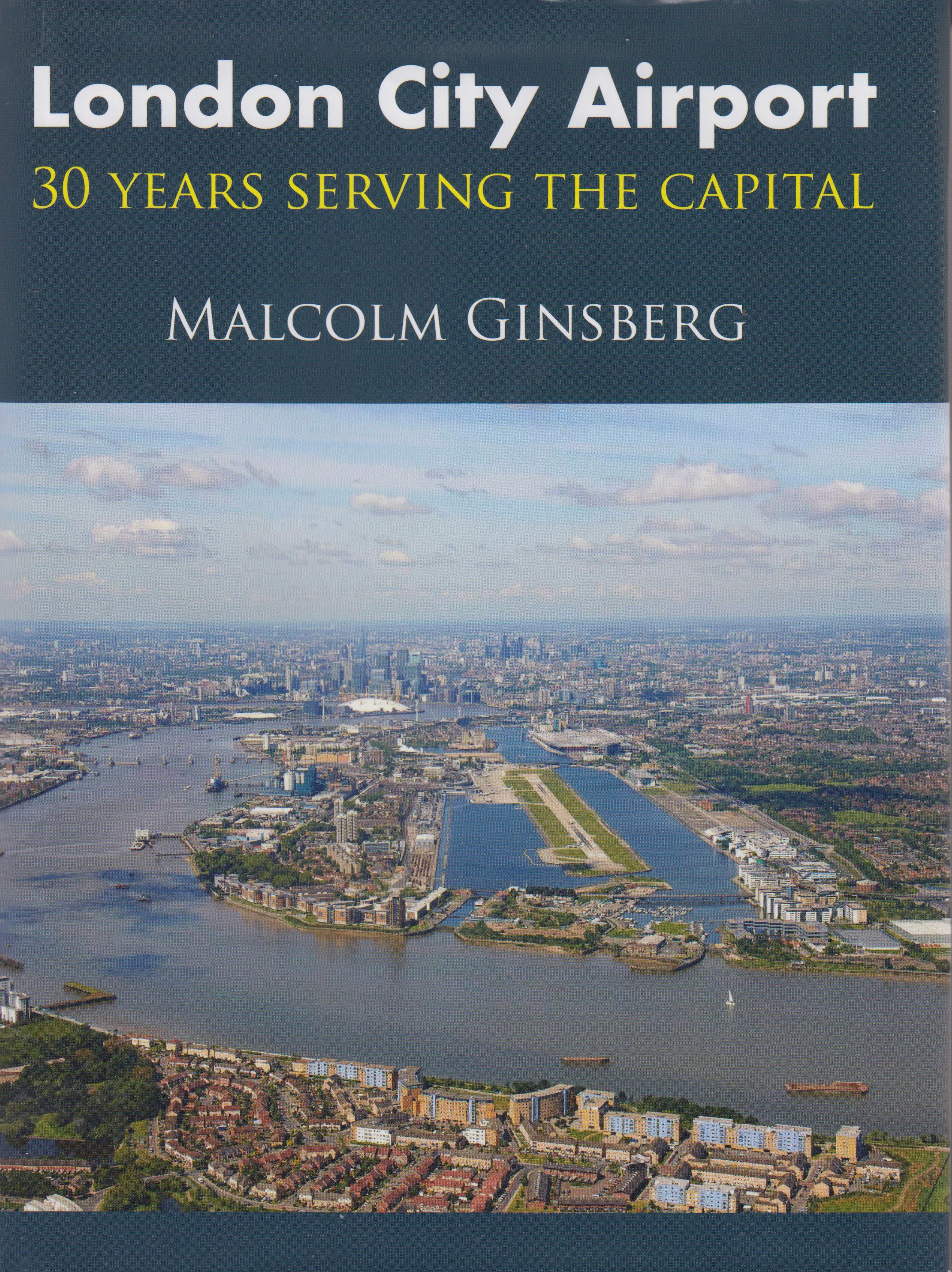
"This discourse has nothing to do with Lotus but if Colin Chapman were alive today he would I am sure be a regular user of the business jet facility at London City Airport, or as it is usually called LCY, which is its IATA three-letter travel industry code.
This is very much an informal talk, not supported by LCY. Nor is it a sales pitch for an airport universally accepted as the easiest to use in London. Landside to boarding can be achieved in ten minutes. A destinations talk is for another occasion. 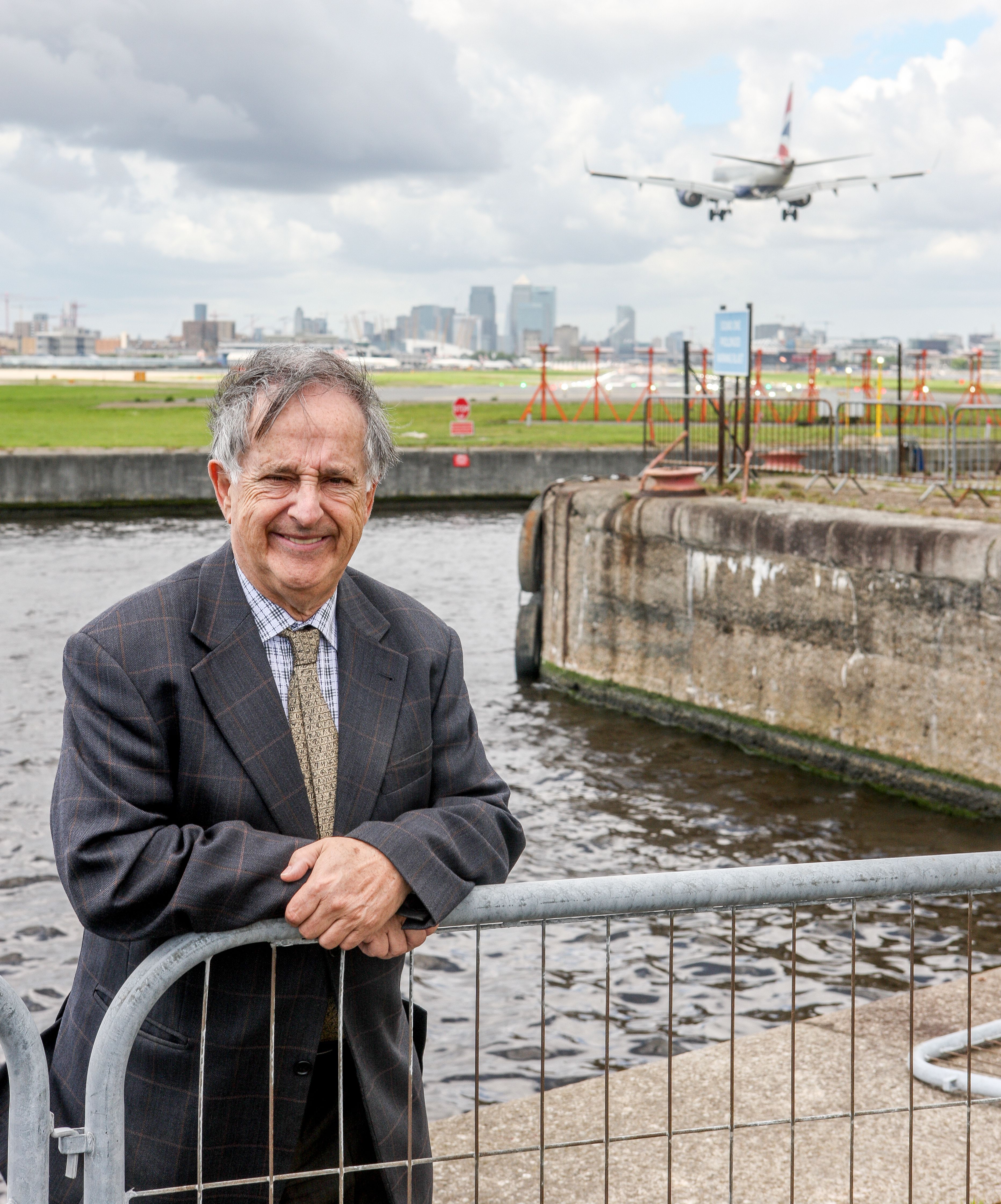 The airport has been part of my life for over 40 years. Originally a motor-sport writer I was recruited by Lotus Cars as media manager 55 years ago, and afterwards became a successful PR man whose clients included a small airline based at Plymouth Airport called Brymon Airways.
The airport has been part of my life for over 40 years. Originally a motor-sport writer I was recruited by Lotus Cars as media manager 55 years ago, and afterwards became a successful PR man whose clients included a small airline based at Plymouth Airport called Brymon Airways.
I was one of the four key people who helped found LCY and have been presented with an award for services to the travel industry.
Can I at this point ask if anyone here knows where the executive building of the Greater London Authority is?
No not County Hall Westminster, nor the derelict carbuncle opposite the Tower of London across the Thames that is the remains of Ken Livingstone’s reign.
The new so-called City Hall is situated in Silvertown one mile directly on the runway line of LCY, proving the point that today’s latest aircraft are much quieter than the predecessors, and the Mayor is happy. Or is he? He has never been to the airport.
East of London the area in the Middle Ages was mostly marshland except for Tilbury, 25 miles towards the sea and the fortress guarding the Estuary. It was here where Elizabeth I made her famous speech in 1588 (“I know I have the body but of a weak, feeble woman; but I have the heart and stomach of a king, and of a king of England too…”).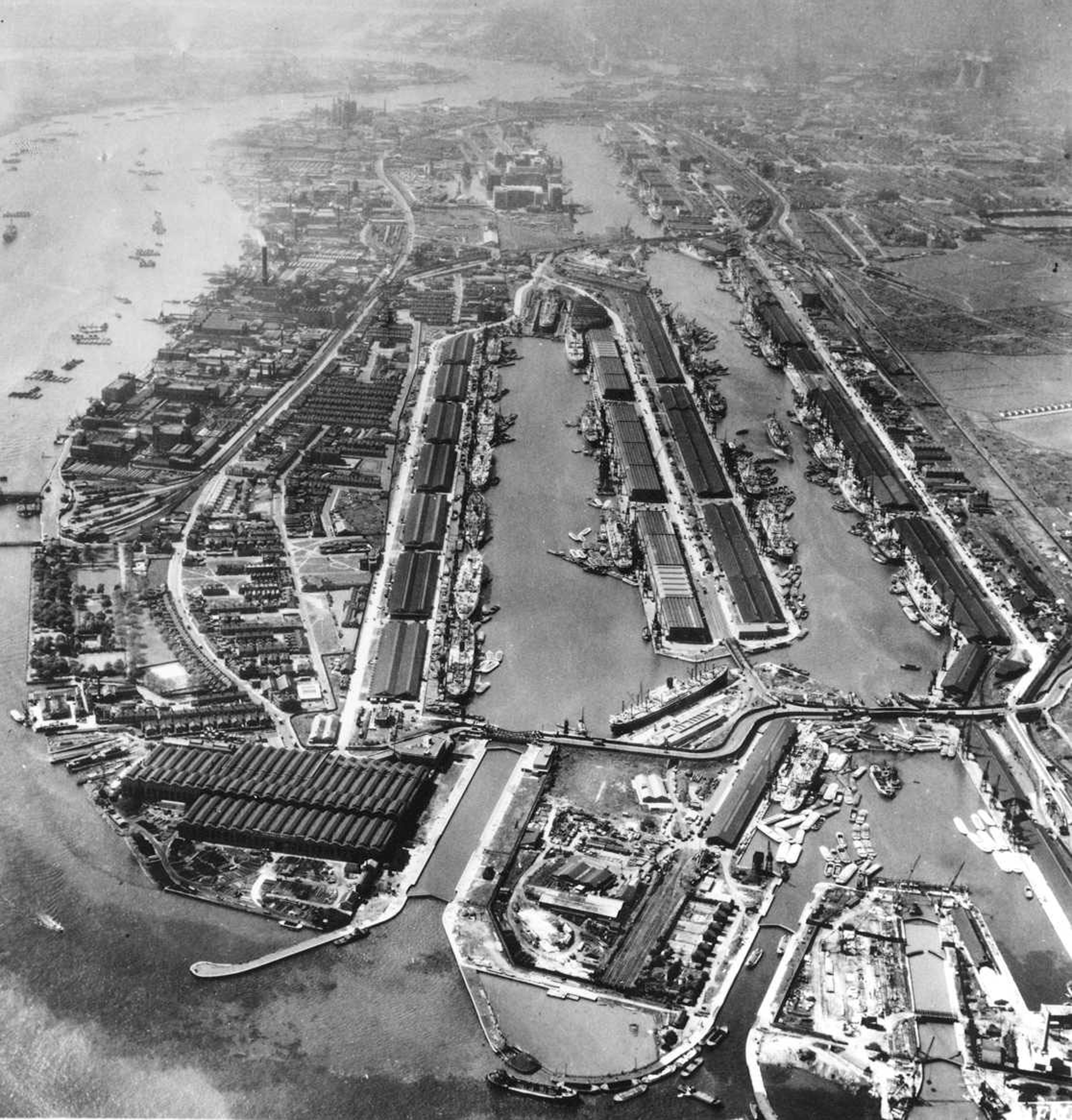 Through the early 1800s docks were being developed, typically the East India. With space being in short supply, in 1855 the Royal Docks opened, part of what at that time was the world’s greatest port. It closed in 1981 due to containerisation.
Through the early 1800s docks were being developed, typically the East India. With space being in short supply, in 1855 the Royal Docks opened, part of what at that time was the world’s greatest port. It closed in 1981 due to containerisation.
The area became known as the Isle of Dogs when Henry VIII’s dogs were walked on it regularly during his reign at the start of the 16th century. Until the 18th century the Isle of Dogs was mainly agricultural land on the edge of the burgeoning metropolis.
Canary Wharf, on the other hand, takes its name from the Canary Islands from where bananas were imported to the West India Docks. Curiously, the Spanish name for the islands, Islas Canarias, is thought to be derived from the Latin name Insula Canaria, meaning “Island of the Dogs”, which according to Roman historian Pliny the Elder was so-called due to the “vast multitudes of dogs of very large size” found there.
The docklands site of The Museum of London at West India Pier is worth a visit, but sadly lacks any prominent feature on the airport, nor Canary Wharf, in whose shadow is the disused warehouse where the museum resides.
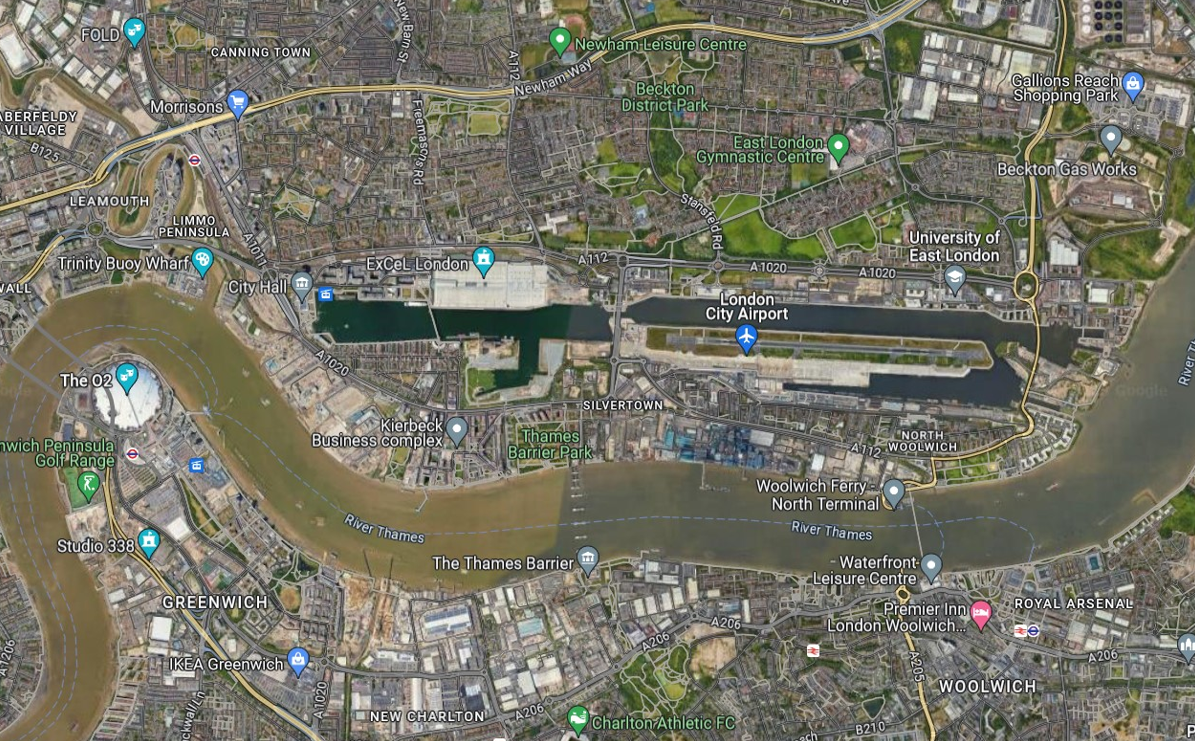 Charles Dickens described the docklands in the 1860s as a place where “accumulated scum of humanity seemed to be washed from higher grounds, like so much moral sewage”. Until the 1960s, the Isle of Dogs was, however, a hive of activity – thousands were employed on the docks and in related industries. It is now being rejuvenated and with the DLR running straight down the centre, property prices are escalating.
Charles Dickens described the docklands in the 1860s as a place where “accumulated scum of humanity seemed to be washed from higher grounds, like so much moral sewage”. Until the 1960s, the Isle of Dogs was, however, a hive of activity – thousands were employed on the docks and in related industries. It is now being rejuvenated and with the DLR running straight down the centre, property prices are escalating.
This presentation takes you through a series of slides and explains the background to LCY. It replicates my book “30 Years Serving The Capital” a history of the airport and what was happening in the world at the time, year by year.
Interrupt if you need to but questions will be taken afterwards. And do use social media.
How many of you have used London City Airport?
In 2017 I was privileged to write the official history of the airport, although in some respects thwarted by the forced removal of AND FINALLY, this last page replaced by an advertisement. I have included in the slide show.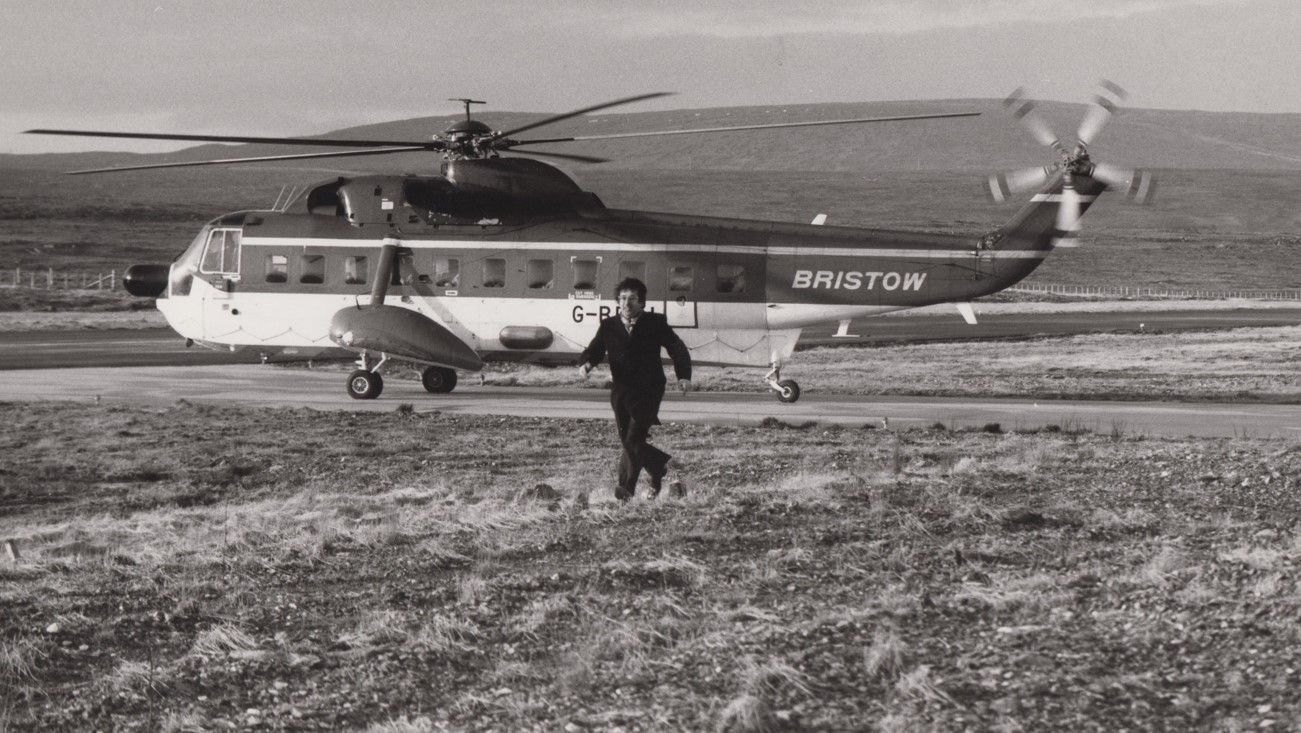 During the whole of the 20th century the North London line ran from Richmond to North Woolwich (with its still working ferry) and a station opposite the Tate and Lyle factory, renamed in 1987 Silvertown for London City Airport. It was on the tracks of this line, from Custom House/Excel that Crossrail was built, now renamed the Elizabeth line.
During the whole of the 20th century the North London line ran from Richmond to North Woolwich (with its still working ferry) and a station opposite the Tate and Lyle factory, renamed in 1987 Silvertown for London City Airport. It was on the tracks of this line, from Custom House/Excel that Crossrail was built, now renamed the Elizabeth line.
The North London line and station closed in 2007, the station not replaced. Politics interfered. Crossrail was late, and Mayor Johnson was promoting his London taxpayer-funded Thames estuary airport project and wished to close London City Airport.
He was assisted by his so-called transport expert Daniel Moylan, now Baron Moylan, a member of the Lords.
In 2019 there were 5.1m passengers passing through the airport. The number for 2024 is thought likely to be around 3.4m. The optimistic owners (in fact the airport management), in pre-pandemic times put a planning application to Newham Council, with a suggested 9m for 2031. That figure cannot be justified when you realise that the largest aircraft only has around 120 passenger seats, as against 500 for an A380 at Heathrow. Who were the airport trying to impress?
Without the Silvertown station the introduction of the DLR in December 2005 was the saviour of the airport, then not meeting projections. Now at least half the passengers use the DLR.
During its history LCY has had four owners: John Mowlem Plc (sold for £25m in 1995) to Irish businessman Dermot Desmond (sold for £750m in 2006) to Global Infrastructure Partners (sold for £2.3bn in 2016) to AIMCo, OMERS, OTPP and the Kuwait Investment Authority, the present owner.
Initially estimated at £300m the cost of the now enlarged apron, parallel taxiway and works to the terminal, never completed, have spiralled and must bring the total outlay to £3bn for the owners.
Here is a timeline of London City Airport
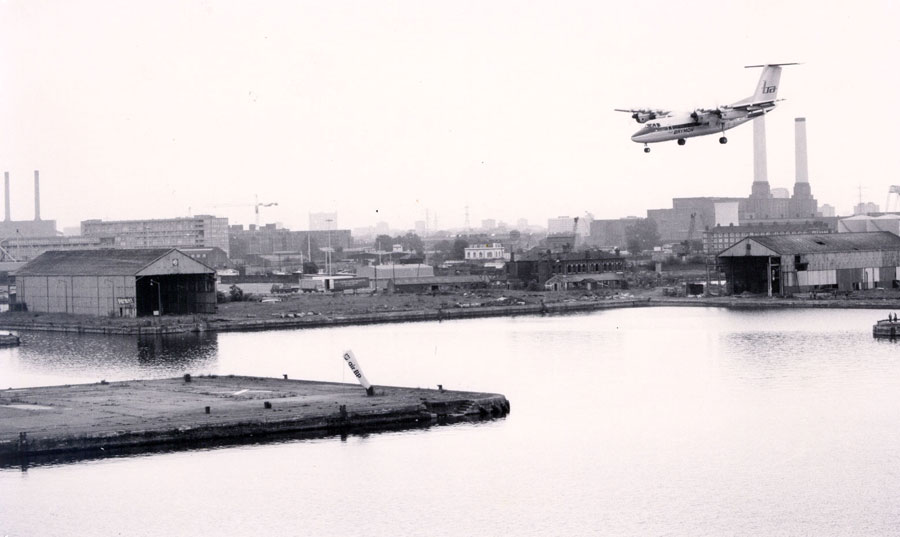 1981 London Docklands Development Corporation (LDDC) was created by Michael Heseltine, also responsible for the rejuvenation of Liverpool from the same period. After successfully launching the megalopolis which is now Canary Wharf the LDDC was formally wound up at the end of March 1998. Reg Ward, Chief Executive, did not receive a single honour for what was the greatest regeneration in our lifetime, nor his number two Stuart Innes, who essentially held the London City Airport portfolio.
1981 London Docklands Development Corporation (LDDC) was created by Michael Heseltine, also responsible for the rejuvenation of Liverpool from the same period. After successfully launching the megalopolis which is now Canary Wharf the LDDC was formally wound up at the end of March 1998. Reg Ward, Chief Executive, did not receive a single honour for what was the greatest regeneration in our lifetime, nor his number two Stuart Innes, who essentially held the London City Airport portfolio.
I visited Unst with Flight International magazine for Brymon Airways to demonstrate the short take off DHC Dash 7 aircraft.
1982 An article published in February was read by Philip Beck, Chairman of Mowlem, builders and developers, much involved with the LDDC, and a private pilot. It was announced just a few weeks ago that Unst is going to be the home of Britain’s first rocket launch site, an interesting connection.
Beck contacted New Zealander Bill Bryce, owner of Brymon Airways, who phoned me in London knowing I had a Private Pilots Licence. He said: “Some crazy fool wants to fly into the docks”. As tasked, I inspected a landing site at Heron Quays, reporting favourably to Bryce.
Following Civil Aviation Authority approval a test landing was made in June at Heron Quays, and there is a plaque to prove it as you reach the steps to the station opposite the main Canary Wharf building.
1983 A public enquiry took place and another landing was organised for the benefit of the Inspector.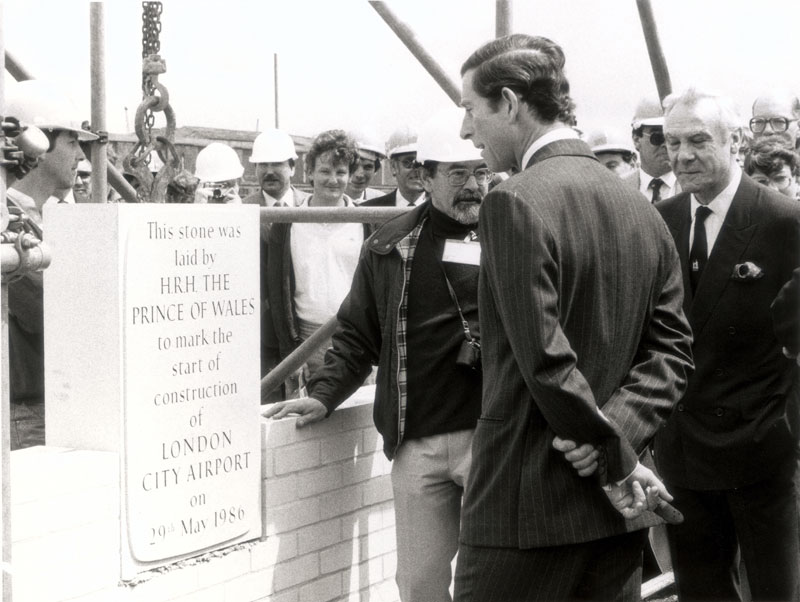 1986 After legal objections the go-ahead was given, and Aviation Minster Michael Spicer launched the building with Prince Charles laying the foundation stone. The Royal Family in some way became the Patrons of the airport, Queen Elizabeth visiting three times, Princess Diana, and the Duke of Kent.
1986 After legal objections the go-ahead was given, and Aviation Minster Michael Spicer launched the building with Prince Charles laying the foundation stone. The Royal Family in some way became the Patrons of the airport, Queen Elizabeth visiting three times, Princess Diana, and the Duke of Kent.
1987 The first landing was in May, the airport officially opened on 26 October with a Brymon service to Paris and the new London City Airways (a British Midland Airways (BMA) spin-off) flight to Amsterdam.
The term London City Airport was suggested by Mrs Anne Stuart, a former pupil of London City School for Girls and wife of Brymon’s CEO.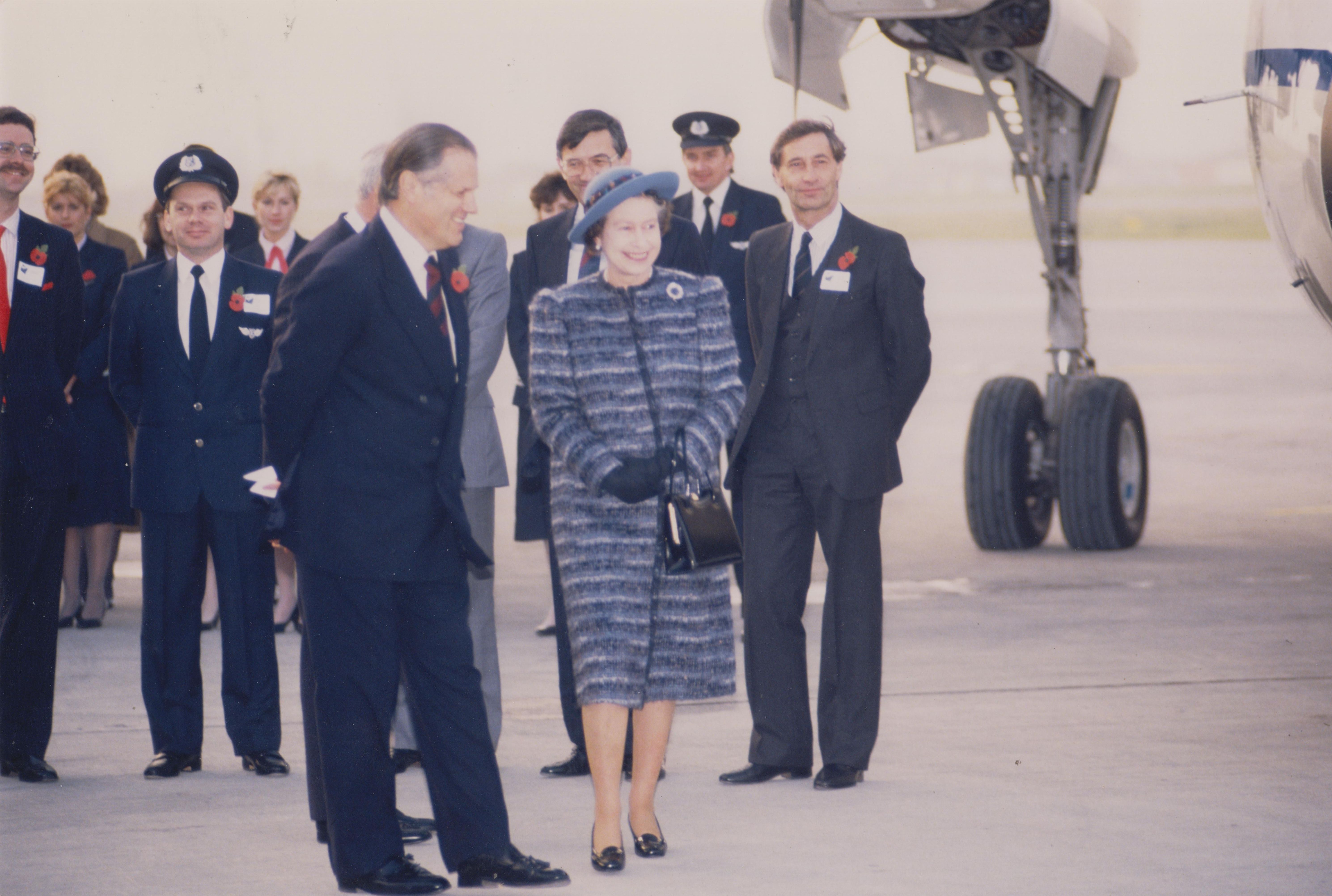 Queen Elizabeth II opened London City Airport on Guy Fawkes Day, 5 November. The Queen came in by road, and returned to Westminster on the Royal Barge. She was quoted as saying to the people on the barge: “Prince Philip would really like this”. Subsequently The Duke flew in quite a few times. Was he the pilot, who knows?
Queen Elizabeth II opened London City Airport on Guy Fawkes Day, 5 November. The Queen came in by road, and returned to Westminster on the Royal Barge. She was quoted as saying to the people on the barge: “Prince Philip would really like this”. Subsequently The Duke flew in quite a few times. Was he the pilot, who knows?
London Mayor Livingstone begrudgingly supported LCY, whilst Mayor Johnson did all he could to strangle the enterprise in 2006, and subsequently by stopping the development of an Elizabeth line station on the site of the old Silvertown Station. As noted, the current Mayor has never been to the site.
1988 The first test landing was on a BAe 146 (Avro).
1989 The twin-engined turboprop DHC Dash 8 arrived, now called Q400.
1992 Flights to Tempelhof, Berlin, were introduced by Conti-Flug.
1993 Brymon Airways, the instigator of LCY, pulled out. At that time it was not part of the strategy of the new owner, British Airways (BA).
1994 Princess Diana visited the airport via a Royal Flight BAE 146.
1999 The Millennium Dome (now O2) was opened.
2003 The return of BA in the form of CityExpress.
2005 The introduction of the DLR at the back end of the year.
2006 The 3m passenger barrier was broken.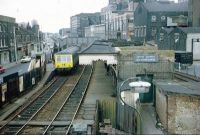 As CityFlyer it is now the largest operator. Wille Walsh, then CEO of BA, was keen on the airport and saw its potential.
As CityFlyer it is now the largest operator. Wille Walsh, then CEO of BA, was keen on the airport and saw its potential.
2009 BA commenced the first scheduled transatlantic flights from the airport in September, westbound via Shannon with a special Airbus A318. This was withdrawn just before the pandemic but was high profile and generated a lot of interest.
It was around this time that the private jet centre was developed, with its own customs and immigration, and aircraft parking area. It has been further developed but it is difficult to obtain passenger and aircraft movement figures. A recent so-called security breach was badly handled PR wise by the airport!
The Embraer 170 (now in the main the Embraer 195) was approved for the airport.
2010 the terminal atrium was filled in, creating the airport as we see it today. Over the years the airside retail space has been extensively developed in this large floor area. The current check-in and escalator are the originals.
2012 Declan Collier, a genial Irishman, and former Managing Director of Dublin Airport, became CEO, seeing much improved numbers, putting a development plan forward to his friends at Newham Council. BA expanded the airport gaining awards. Queen Elizabeth, a great supporter, popped in on her way to the Olympics.
2015 By this time 4m-plus passengers were using the airport.
2017 In March a Bombardier C series (now Airbus A220) flew non-stop to New York JFK, another Collier initiative that has not been taken further.
Collier quit later in the year after getting the Board go-head for the airport’s development. He was at odds with the newly appointed Chairman Terry Morgan in promoting the Elizabeth line station.
Collier was replaced by Robert Sinclair, a New Zealander and previously Managing Director of Bristol Airport.
2019 A record 5.1m passengers passed through the airport. This year the number could reach to 3.4m. Most of the larger UK airports will in 2024 surpass 2019, the best year ever. The lack of passengers would have also been noted by the outlets both landside and airside at the airport, paying big rents.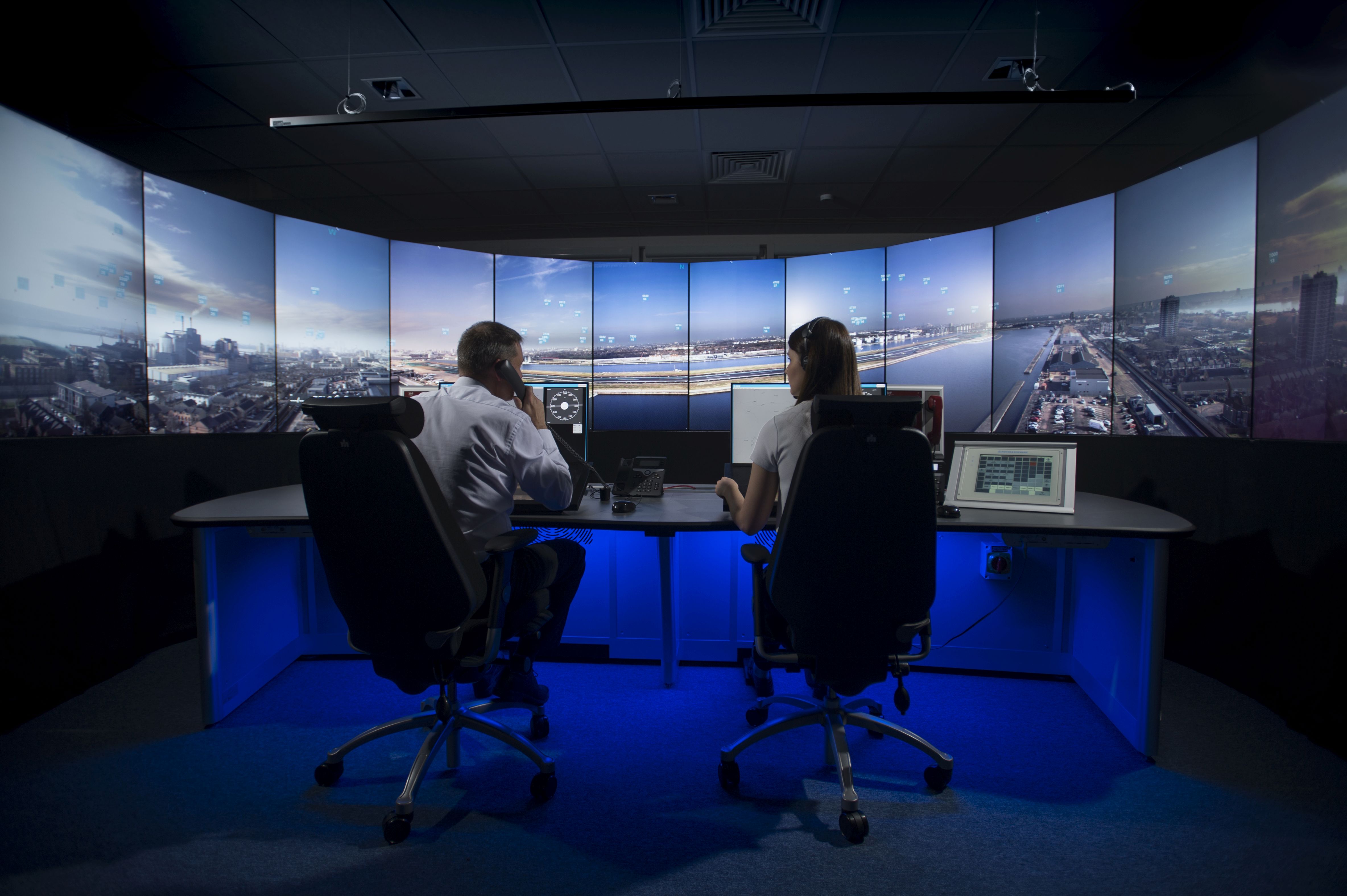 2020 A full parallel taxiway runway was completed which meant up to 40 aircraft landings and take-offs could be completed in one hour, with delays due to runway restraints being very limited.
2020 A full parallel taxiway runway was completed which meant up to 40 aircraft landings and take-offs could be completed in one hour, with delays due to runway restraints being very limited.
2021 In January, after a delay due to the Covid-19 pandemic, LCY became the first major airport controlled by a remote air traffic control tower.
2023 A new search system was introduced very much speeding up entry to airside. It is literally ‘hands free’ and larger liquid items can now be checked through with the rest of your hand luggage. It is one of the first two in the country.
Late last year Sinclair resigned to become CEO of HS1 and at the time of writing after five months no replacement has been announced. 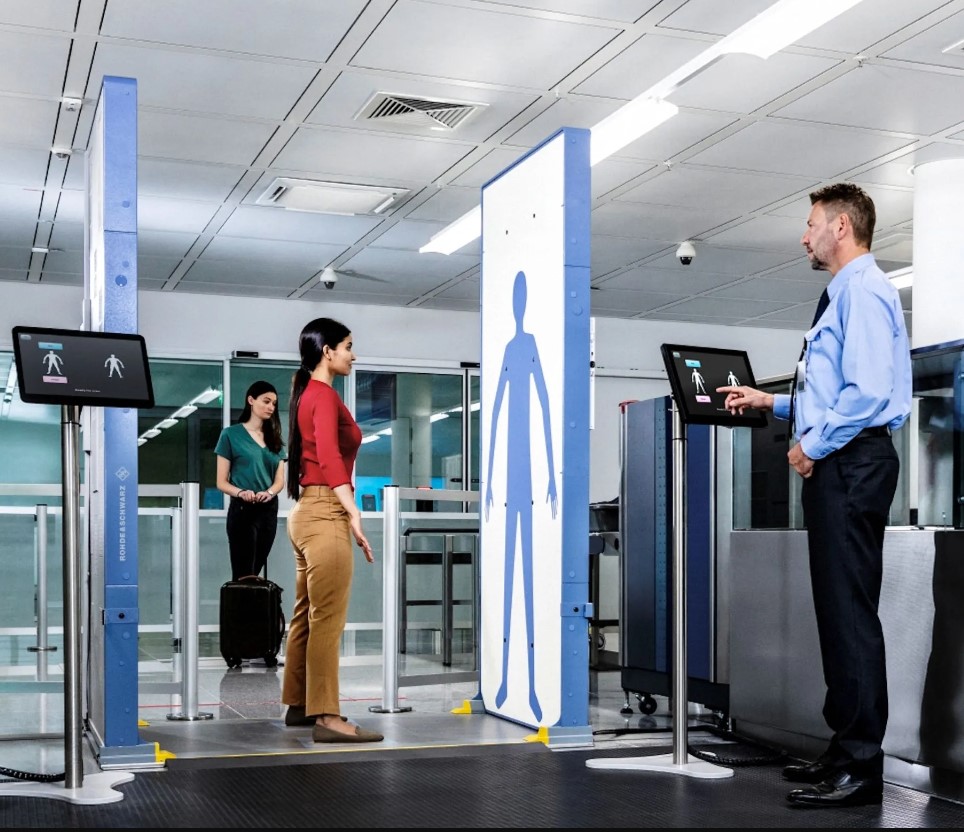 Sinclair was dominated by Terry Morgan, Chairman of London City Airport and also Chairman of Crossrail. Morgan was not interested in an Elizabeth line station as it was claimed any development might slow the launch of the cross London line, which eventually opened at least three years late and at a huge cost overrun. Morgan also has resigned from London City Airport since that time. Collier’s plan and analysis for the Elizabeth line station still exists and could form part of a new reinvigorated scheme.
Sinclair was dominated by Terry Morgan, Chairman of London City Airport and also Chairman of Crossrail. Morgan was not interested in an Elizabeth line station as it was claimed any development might slow the launch of the cross London line, which eventually opened at least three years late and at a huge cost overrun. Morgan also has resigned from London City Airport since that time. Collier’s plan and analysis for the Elizabeth line station still exists and could form part of a new reinvigorated scheme.
LCY submitted a planning application to Newham Council to increase the opening hours, which has controversially been turned down. The airport remains confident that it will be given the go-ahead once the planning procedures are completed. It is presently closed Saturday afternoon and Sunday morning, the request not being for more movements but extra flexibility Saturday afternoon. With the announcement a tiny unrepresentative local opposition group used the opportunity to promote wrong facts which were taken up by local newspapers without proper research. Their website shows an Alamy image of a DHC Dash 7 taken at Plymouth City Airport 35 years ago. I have no comment on the response by the airport nor on its media relations.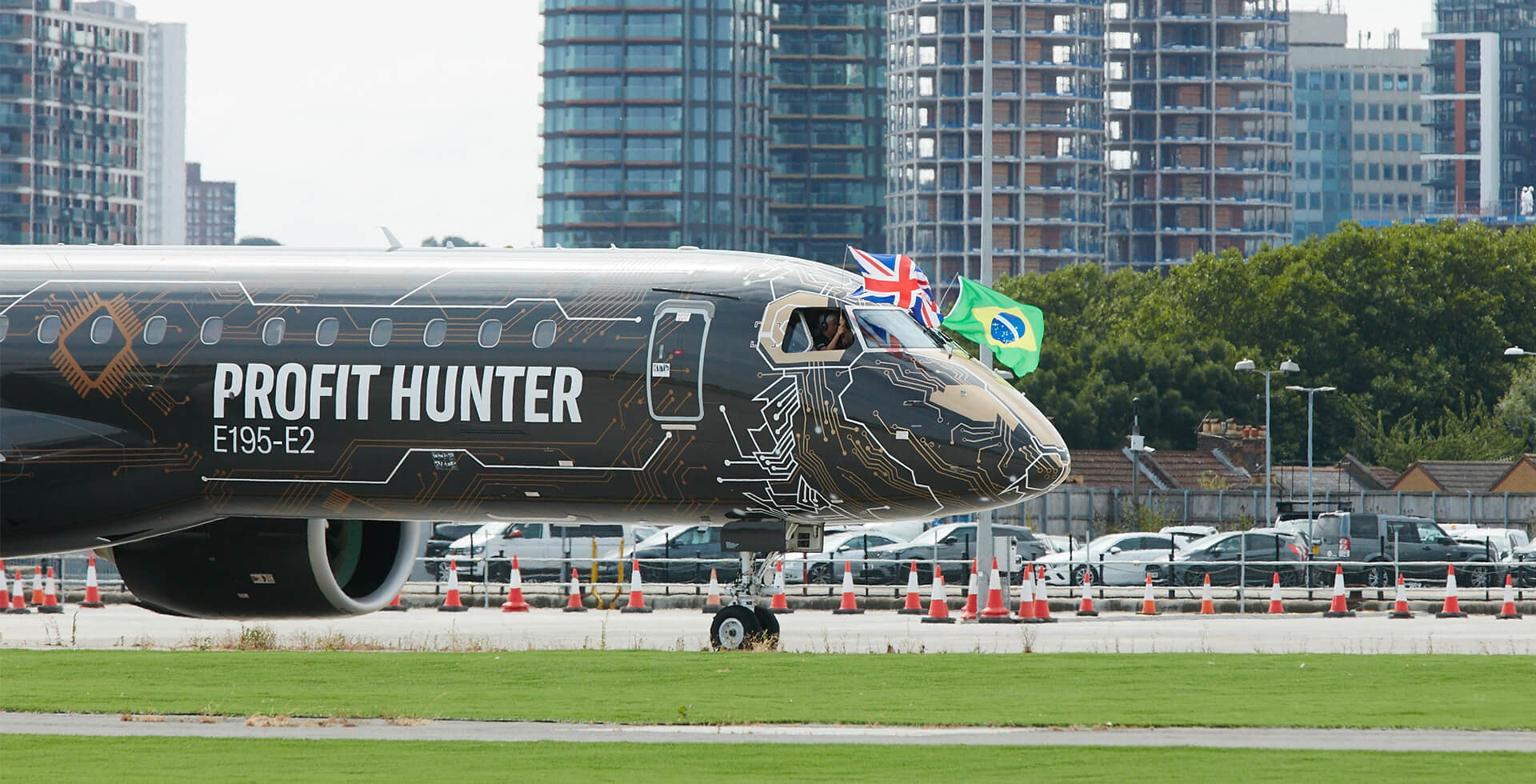 The slowdown at Canary Wharf is said to be the cause of the bad traffic numbers, but business travellers are vital for all major airports. LCY was conceived as an airport for business travellers but prior to the pandemic 50% of passengers were thought to be leisure.
The slowdown at Canary Wharf is said to be the cause of the bad traffic numbers, but business travellers are vital for all major airports. LCY was conceived as an airport for business travellers but prior to the pandemic 50% of passengers were thought to be leisure.
2024 In March the Borough of Newham published what it called a “Transformative vision agreed for Royal Docks to deliver 36,000 new homes and 55,000 new jobs at Royal Docks”. LCY did feature on the front cover but there is no mention of a Silvertown Elizabeth line station and just a vague notice that electric bus services to and from the airport could be introduced to Custom House Station.
www.newham.gov.uk/news/article/1242/transformative-vision-agreed-for-royal-docks-to-deliver-36-000-new-homes-and-55-000-new-jobs-at-royal-docks
We shall see what a new CEO brings. Presently the airport is back to the levels of ten years ago with growth at 10% of the poor 2023 numbers. The planned rebuilding of the public airside area is on hold. What is needed is vision and a large pocket.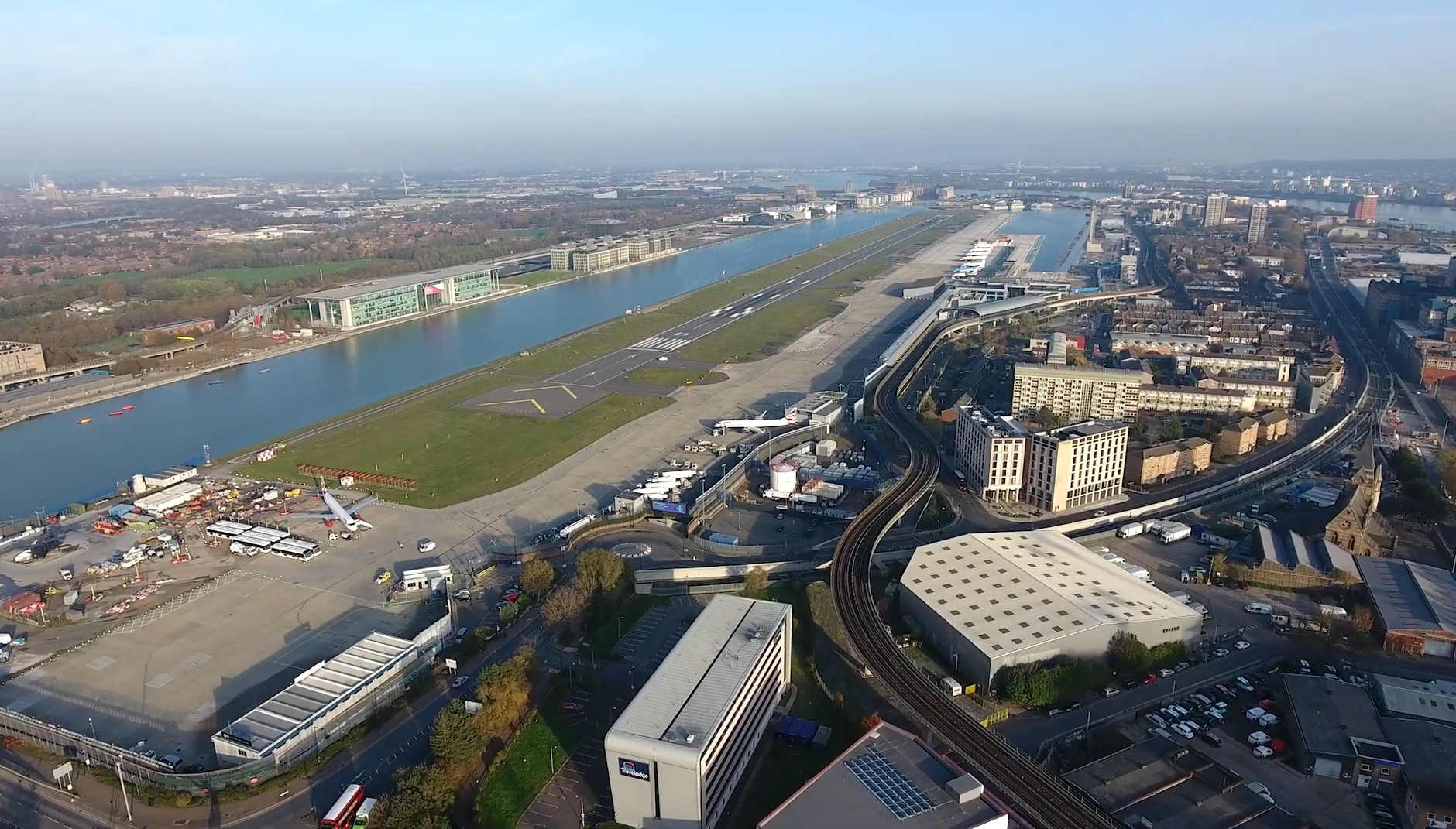 The airport is dominated by BA CityFlyer, an independently run subsidiary of the national airline. Tom Stoddard holds the brief as CEO for the airline, and also EuroFlyer at Gatwick. The airline operates the successful Embraer 190 with 2+2 seating accommodating 98 passengers. Stoddart, himself a pilot (A320), has negotiated with the pilot union BALPA for an increase to 106, which can be easily adapted and in the short-term gives an 8% increase and covers to a certain extent a reduction from 24 to 20 aircraft operated before the pandemic. The change in configuration, which includes new lightweight seats, will be completed fleetwide later this year.
The airport is dominated by BA CityFlyer, an independently run subsidiary of the national airline. Tom Stoddard holds the brief as CEO for the airline, and also EuroFlyer at Gatwick. The airline operates the successful Embraer 190 with 2+2 seating accommodating 98 passengers. Stoddart, himself a pilot (A320), has negotiated with the pilot union BALPA for an increase to 106, which can be easily adapted and in the short-term gives an 8% increase and covers to a certain extent a reduction from 24 to 20 aircraft operated before the pandemic. The change in configuration, which includes new lightweight seats, will be completed fleetwide later this year.
In recent days Aurigny of Guernsey and ITA, the Italian successor to Alitalia, introduced services to St Helier (Jersey) and Rome respectively. No other increase for this year and most frequencies stay the same.
BA ROUTES SUMMER 2024
Amsterdam (22+ flights per week)
Barcelona (4+ flights per week)
Bergerac (5 flights per week in June, July and August only)
Berlin (22+ flights per week)
Dublin (21+ flights per week)
Faro (4+ flights per week)
Florence (14+ flights per week)
Frankfurt (10+ flights per week)
Ibiza (11+ flights per week)
Malaga (7+ flights per week)
Mykonos (2 flights per week in June, 6 in July and August only)
Nice (9+ flights per week)
Palma de Mallorca (4+ flights per week)
Rotterdam (17+ flights per week)
San Sebastian (2 per week)
Skiathos (3 flights per week in June, July and August only)
Split (2 flights per week in June, July and August only)
Thessaloniki (2 flights per week in June, July and August only)
Zurich (15+ flights per week)
The airline also flies to both Edinburgh and Glasgow with multiple services daily.
www.londoncityairport.com
www.hacaneast.org.uk This is an opposition group.
www.newham.gov.uk/news/article/1242/transformative-vision-agreed-for-royal-docks-to-deliver-36-000-new-homes-and-55-000-new-jobs-at-royal-docks
Hardback now available from www.crecy.co.uk/london-city-airport
ISBN 978-1-900438-07-0
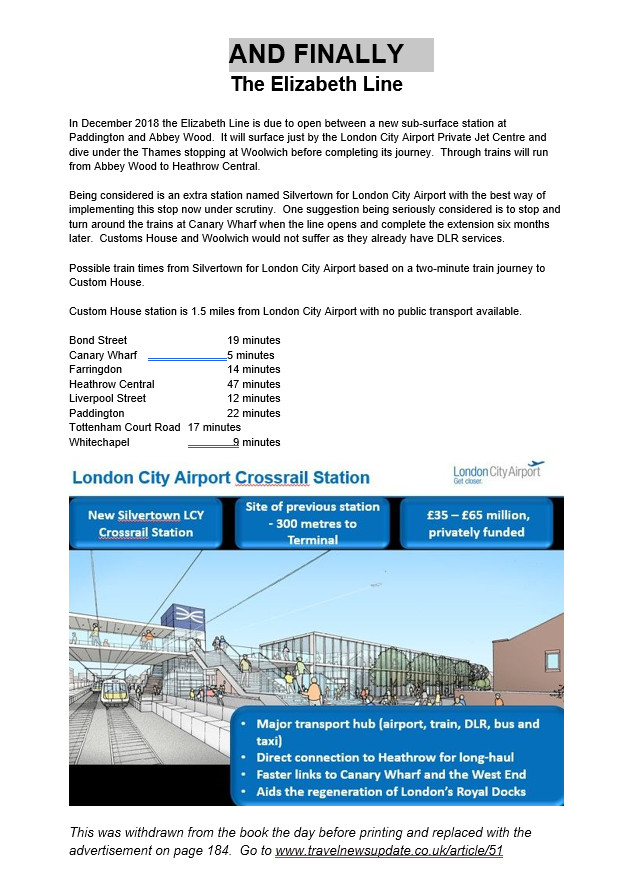
READERS' COMMENT
All comments are filtered to exclude any excesses but the Editor does not have to agree with what is being said. 200 words maximum
John Jones, East Ham
London City Airport is a great asset for London and needs to be protected by the Mayor. He has to see its real value to the whole community and that it must be commercially viable for both owners and airlines. A tiny caucus must not hold London to ransom.
Travel News Update
20 Lodge Close, Edgware HA8 4RL, United Kingdom
+44 (0)7973 210631
malcolm@ginsberg.co.uk
© 2023 Travel News Update Ltd
